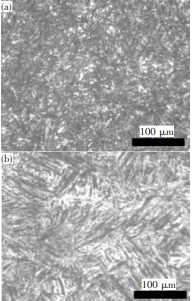The effect of quenching method on the hardness of the roller skin of the briquette machine
In this paper, the effect of double-quenching on the surface hardness and heat treatment deformation of the roller skins was investigated using 9Cr2Mo steel roller skins for briquette machine, and the parameters of the double-quenching process were determined. The results show that by using the double-quenching method, the outer surface of the roller skin forms a hardness gradient distribution with high hardness in the middle and low hardness at the edges, and the heat treatment deformation of the roller skin is reduced and the service life is significantly improved.
Coal powder, alloy powder, iron powder, aluminium ash powder, ore powder and so on are commonly used raw materials and auxiliary materials in the metallurgical industry. If the powder state is used directly, it will cause great dust pollution and hidden danger to the environment. At present, the briquette machine is mainly used to press the corresponding powder into a spherical or ellipsoidal shape, which can reduce dust pollution and facilitate transportation, and can also improve the use rate of the powder.
The roller skin is in direct contact with the powder, which is the key part of the briquette machine. The selection of the material and the optimization of the heat treatment process are particularly important.
Metal powder and smelting waste slag powder, roller skin are required to have high hardness and wear resistance, and alloy steel roller skin is mostly used, such as 9Cr2Mo alloy steel. Fine powder, such as coal powder and clay, has relatively low requirements for roller skin materials. 65Mn steel can be selected.
In the process of contact moulding of roller skin and hard powder, in addition to normal wear, material collapse often occurs on the surface (also known as brush edge failure), especially at both ends of roller skin. According to incomplete statistics, the roller skin that can not be used because of brush edge failure is the main factor that causes the ball press to stop and repair. After the installation of some domestic roller skin, the moulding powder only produced brush edge failure in more than 10 tons, far less than the processing capacity of imported roller skin 8000 ~ 10000 T.
How to further improve the service life of domestic rollers to replace imported products has become a key challenge faced by Chinese press enterprises.
——Heat treatment technology is the key technology to improving the performance of roller skins.

(a) dual liquid quenching; ( b) single liquid quenching
Fig:Microstructures of roller sheet under different quenching method
The roll skin treated by the conventional single-liquid quenching process can obtain a uniform hardness distribution on the surface. However, in the process of forming the powder, the roll skin is subjected to uneven forces in the middle of the surface and at the edges, and asymmetrical forces are exerted at the corners during the extrusion of the powder, making it more prone to brush failure. In addition, single-liquid quenched roll skins are subject to large heat treatment deformations. As the roller skins of a pellet press are used in pairs, the deformation after heat treatment will inevitably affect the accuracy of the assembly and ultimately reduce the service life of the pellet press.
Double quenching as a heat treatment method for large parts can effectively reduce the transformation stress during the quenching process and improve the cooling conditions, and has been applied to drive shafts and gears with good results.
The specific findings are as follows:
1. With the increase of the pre-cooling time outside the furnace of the double-quenching process, the overall hardness of the roll skin tends to decrease and a hardness gradient is formed on the surface with the hardness of the middle part being higher than that of the end part;
2. The overall hardness of the roll skin decreases as the pre-cooling time of the double-quenching process increases, and when the pre-cooling time reaches 5 min, the hardness gradient on the surface of the roll skin disappears;
3. The optimum quenching and cooling process for the double-quenching of 9Cr2Mo roller skins was determined as follows: 5 min pre-cooling outside the furnace; 1 to 3 min pre-cooling for double-quenching




